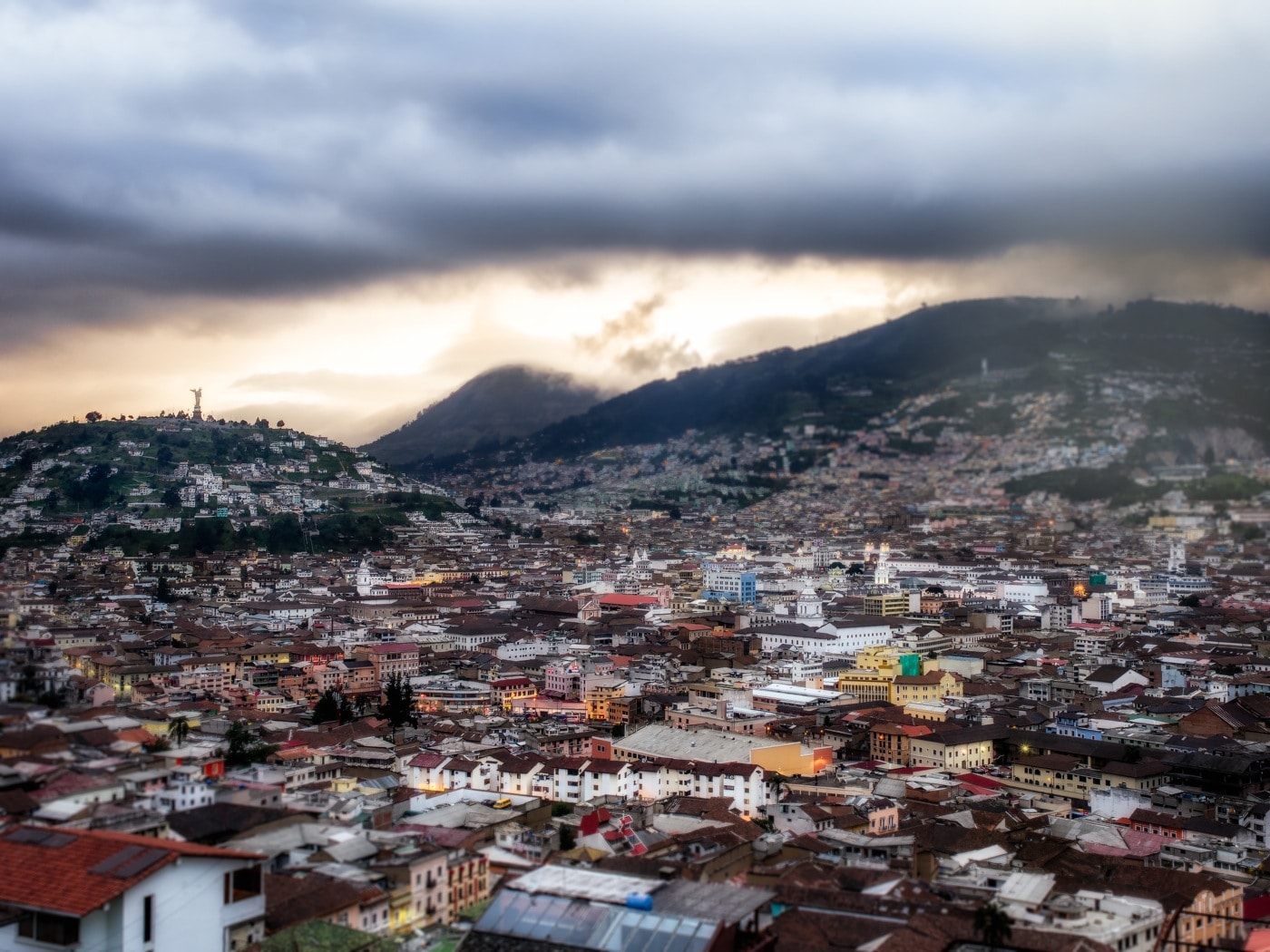A few puffs on a Marlboro and a damn good thrashing with some herbs – apparently that’s all it takes to stop a child from having nightmares. Or so the limpea healers in Quito’s San Francisco Market tell me. I show my polite, but not convinced face. Moments earlier I had peered behind a curtain and witnessed this very treatment being administered. It actually looked like the stuff of nightmares to me; a young teary-eyed girl was being restrained by an old lady as a “healer” blew cigarette smoke into her face and flayed her with a bouquet of herbs.
Such treatments are de rigeur in San Francisco Market, where limpea practitioners also do a nice line in aphrodisiacs. Earlier I had bought a bar of soap which I was told would make me irresistible to women. “Only if you use it every day,” said the spurious vendor. “If you don’t, you will become irresistible to men.” He then disappeared, laughing, with my $5.
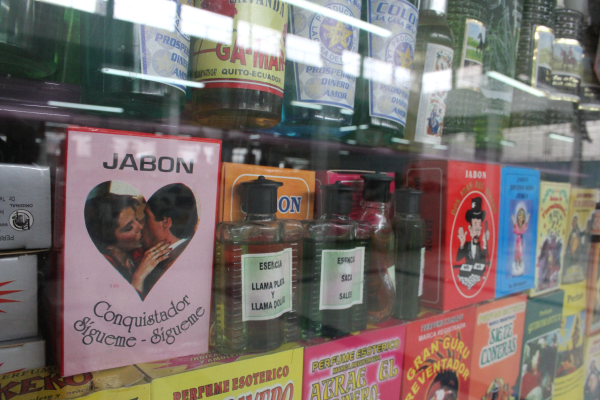
Elsewhere in the Market
Established in 1893, San Francisco Market is not all child cruelty and dodgy aphrodisiacs. Like most of Quito’s markets, the place is stacked to the rafters with vibrant fruit and vegetable stands and food stalls, offering an authentic taste of Ecuador with hog roasts, soups and freshly squeezed juices. The resident butchers do some curious business in all manner of meats. “We use these to make soup,” explains my guide, David, picking up a cow’s foot. “We eat it on the weekend – it’s good for hangovers.” Suffice it to say also that Ecuadorians leave nothing to waste; other delicacies include eyes, stomach linings (commonly served with rice, boiled egg and peanut sauce) and fetuses, which I’m told make a mean broth.
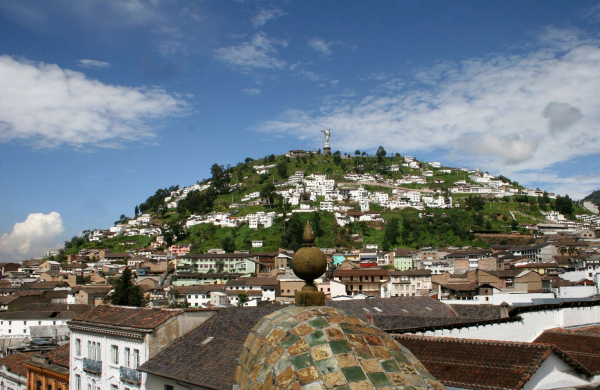
Dazzling Attributes
Nestled in a picturesque valley some 9,000 feet above sea level, Ecuador’s lofty capital is regarded as the best-preserved colonial city in South America. Its historic Old Town is a marvelous maze of cobbled streets, markets and Catholic churches, dazzling attributes which helped it become UNESCO’s first World Heritage Site (along with Krakow) in 1978.
If you’re into religion you can spend days marveling at the unabashed wealth of Catholicism on display in Quito. It’s hard not to be blown away by the imposing Cathedral of Quito, Church of San Francisco and La Compañía, which is decorated almost exclusively in gold leaf.
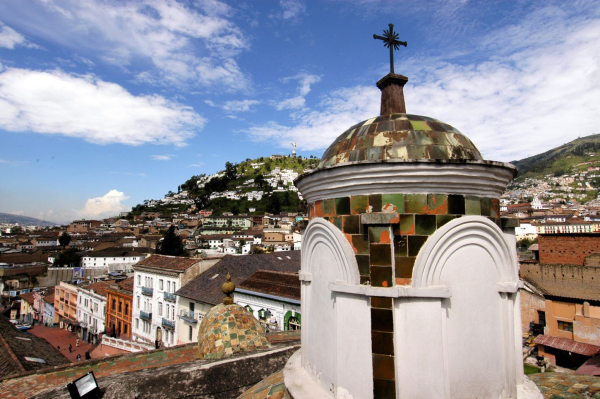
Another Side of Quito
I found La Ronda altogether more interesting. A decade ago this street was well off the tourist trail. Those who knew what was good for them avoided this place like the plague and those who didn’t came to its darkened corners for narcotics and illicit sex. It was a shady street for nefarious people. Nowadays, La Ronda is a jewel in Quito’s crown. Thanks to extensive regeneration, it has become a star attraction; day and night it throngs with locals and international tourists. They come to this cobbled street for the lively bars, restaurants and artisanal shops, where local craftspeople honor dying arts. “The government has spent a lot of effort trying to recover traditional trades,” says Patricio Velásquez of Quito Turismo. “The businesses are subsidized by the government to continue traditions that have almost disappeared from Ecuador.”
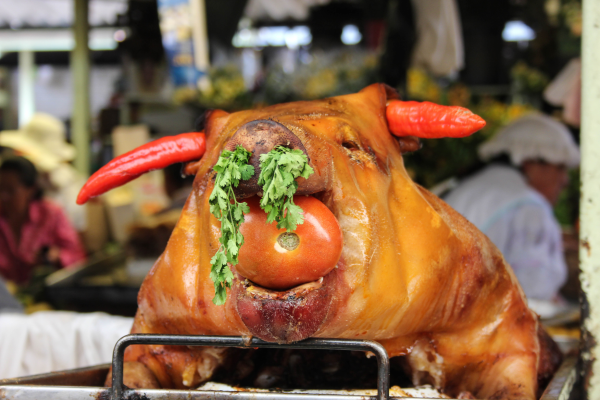
With its profusion of old-fashioned chocolatiers, traditional ice cream parlors and restaurants, modern-day La Ronda remains an avenue of temptation – although unlike the wares once peddled down this street, calories are legal.
Despite my weakness for all things sweet, I’m drawn not to the confectioners, but to the workshop of piano doctor, Huberto Santacruz. I had heard him tapping the ivories from across the street and when I arrive at his cluttered studio I find him restoring a 250-year-old piano. “It’s French, from the 18th century,” he says of the worn-out instrument that’s older than most. “I have been working on it for seven days and will need to work 20 more to finish it.” He then starts playing the rickety old thing and somehow coaxes a beautiful tune from the instrument. The doctor then poses for photographs and sells me one of his CD’s.
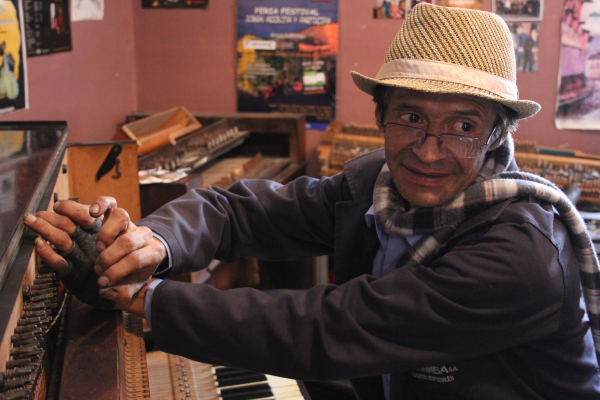
“I have done two albums,” he says, proudly. “I learned from my father, who founded the first radio station in Riobamba. He taught me everything.” As we chat, two boys linger in the doorway waiting for their music lesson. Santacruz ushers them into the workshop and they start riffing impatiently on guitars. “It’s about leaving a legacy,” he says, watching his students. “That is what we are trying to do here.”
Center of the Earth
On the dusty fringes of northern Quito lies a complex known as La Mitad del Mundo, which, for those who aren’t up to speed on their Spanish, means the “middle of the world.” This is the place to come if you want a picture of yourself straddling the line that gives this country its name – the equator. A monument marks the point where French explorer Charles-Marie de la Condamine determined the equatorial line. There’s also an ethnographic museum, chintzy souvenir shops and restaurants selling spit-roasted guinea pig.
But there’s just one problem – this isn’t actually the exact center of the world. Modern GPS revealed the Frenchman’s calculations to be some 800 feet adrift and the equator actually runs through the neighboring Museo Inti Nan, where guides lead tours around the indigenous style houses and conduct experiments on the real equator. Those prepared to venture further than the sprawling suburbs of Quito are spoiled for choice when it comes to attractions; the Amazon is a half-day away by car, Galapagos is a two hour flight and Ecuador’s largest active volcano can be done in a day trip.
The Train to Cotopaxi
Time against me, I opt for the volcano excursion to Cotopaxi. Keen to avoid the rush hour traffic, I jump on a train at Chimbacalle Station, which is the centerpiece of a $280 million redevelopment of the country’s historic railways. The train rattles through the city’s suburbs, passing yards from people’s homes, where front doors open to reveal waving children and barking dogs. We leave the capital and climb into the drizzly Andean countryside. It’s as green as England up here, not what you’d expect from a country that straddles the equator. Under a brooding sky cows graze on lush grass, farmers cultivate crops and smoke billows from farmhouse chimneys.
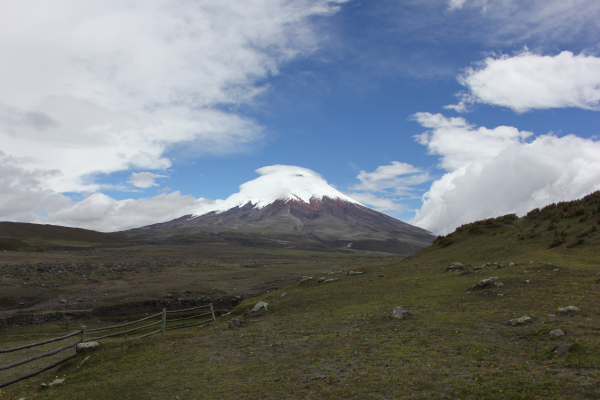
After carving through this lazy rural scene, I alight at Machachi station. Here Edison Palomeque, a guide for Metropolitan Touring, takes me to Cotopaxi National Park which is a short drive from the station. In spite of Cotopaxi’s fearsome reputation, she is hiding behind a veil of clouds when we arrive, so we trek around the foothills to admire the scenery. Our search for Andean Condors yields no results, but we are rewarded for our patience by a parting of the clouds – finally, a snow-covered Cotopaxi reveals herself. She looks magnificent, looming over the valley full of grace and menace.
Unfortunately, I can’t fully appreciate the spectacle. Suddenly I feel dizzy and nauseous. Edison listens sympathetically to my symptoms, diagnoses altitude sickness and advises me to drink cocoa tea. I breathe a sigh of relief – for one, horrible minute I thought he might take me to see the limpea doctor.
[alert type=white]
Where to Stay:
Casa Gangotena – Sleep under hand-painted ceilings in this former townhouse, which has been lovingly converted into a five-star boutique hotel. Located in the heart of old town Quito, the rooftop terrace has stunning views over Plaza de San Francisco. Bolivar OE6-41 y Cuenca; 593 (2) 4008 000; www.casagangotena.com
La Casona de la Ronda – Opened in 2011, this boutique hotel is perfect for getting to know lively La Ronda. Period features abound in the old colonial building, which has 22 rooms, a rooftop lounge and restaurant serving excellent Ecuadorian cuisine. Street Morales (La Ronda) OE1-160; 593 (2) 2287 538; www.lacasonadelaronda.com
Hotel Plaza Grande – Overlooking Independence Square, this hotel is one of Quito’s finest and is perfectly located for exploring the old town. The colonial mansion is an Aladdin’s Cave of antiques and boasts two sumptuous restaurants plus a health spa. Garcia Moreno N5-16 y Chile; 593 (2) 2510 777; www.plazagrandequito.com
Where to Eat and Drink:
La Gloria – Ecuador is quietly emerging as a gastronomic hotspot and restaurants like La Gloria are helping lead the charge. Located in the new town, its chefs put a contemporary spin on Ecuadorian classics such as guinea pig and ceviche. The owner keeps a fine wine cellar too. Valladolid N24-519 y Fco. Salazar; 593 (2) 2527 855; www.lagloria.com.ec
La Choza – This family-run restaurant has become a culinary reference point in the capital thanks to its time honored Ecuadorian recipes, which have been given a modern tweak. La Choza is affordable, fun and highly recommended. 12 De Octubre N24-551 y Cordero; 593 (2) 2230 839; www.lachozaec.com
Alma – Okay, so you haven’t come all the way to Ecuador to have Argentinian fare, but this trendy eatery served the best food I had in Quito. I’m still having dreams about the six-course tasting menu. A culinary triumph. El Monitor 188 y Quiteno Libre; 593 (2) 2252 248; www.alma.com.ec
El Pobre Diablo – This hipster hangout is well known for cocktails and live music, which goes on until the wee hours on the weekend. El Pobre Diablo attracts a young, creative crowd and is a good spot for getting to know the locals. Isabel La Catolica N24-274 y Galavis esq. La Floresta; 593 (2) 2235 194; www.elpobrediablo.com
What to Do:
Churches and market
The old town has a glut of churches, monasteries and cathedrals, not to mention vibrant markets. Quito Turismo has knowledgeable guides on hand to lead tours around them and provide a much needed translation service. Alternatively, you could just get lost and see what happens. Venezuela s/n and Espejo (corner); 593 (2) 2572 445; www.quito.com.ec
La Ronda – Once a shady street for nefarious people, La Ronda has been transformed into one of Quito’s most popular neighborhoods. Visitors can talk to local craftspeople, buy artisanal products and play traditional games in the street.
Mitad del Mundo – Located on the dusty fringes of Quito, near San Antonio de Pichincha, this complex features a museum, monument and restaurants. Trouble is this is not actually the center of the world – that’s next door. www.mitaddelmundo.com
Museo Intinan – Museo Inti Nan really does straddle the equator and its affable guides conduct fun experiments along the center of the Earth and lead visitors around indigenous style homes made of mud and wood. www.museointinan.com.ec
Cotopaxi – Cotopaxi is Ecuador’s highest active volcano and makes for a great day trip from Quito. Metropolitan Touring offers tailored itineraries to Cotopaxi and beyond, which includes food, guides and transport on rail or road. www.metropolitan-touring.com
[/alert]

